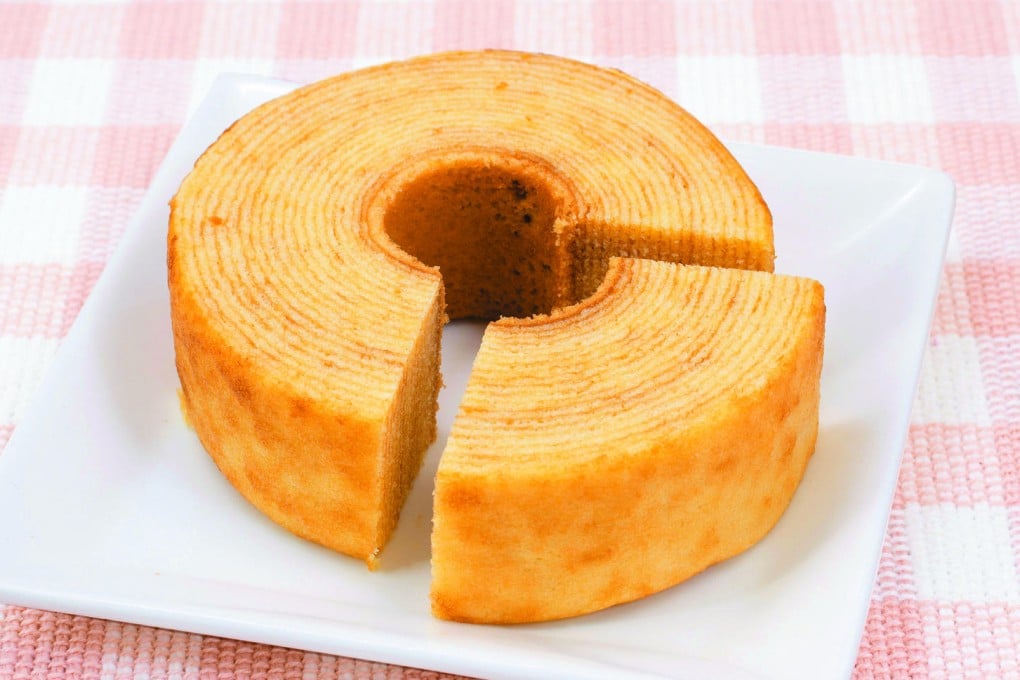
In Tokyo a few months ago, while wandering the wonderful food halls in the basements of department stores such as Mitsukoshi and Sogo, I was struck by the number of bakeries selling the ring-shaped cakes known as baumkuchen. German for "tree cake", the name was inspired by the many layers, which resemble the rings you can see on the cross section of a tree trunk.
The cake's distinctive look is created by the repeated pouring of a loose batter onto a spit that rotates in front of a heat source, which, traditionally, would have been a roaring wood fire, but is now far more likely to be an open oven. The batter cooks and browns as it rotates, and, gradually, enough layers are built up so that the cake can be removed from the spit and sliced into thick pieces that show the rings. Sometimes the cake is glazed with a poured icing, which seems to lock in the moisture.
These multi-layered cakes were not unique to Germany (although it is possible they originated there before spreading to nearby countries). In Indonesia, a similar cake is called kueh lapis. It's not cooked on a rotating spit, and the cake batter is spread - not poured - over the previously baked layers underneath. Some bakeries stud kueh lapis with pieces of dried fruit, such as raisins or pitted prunes.
